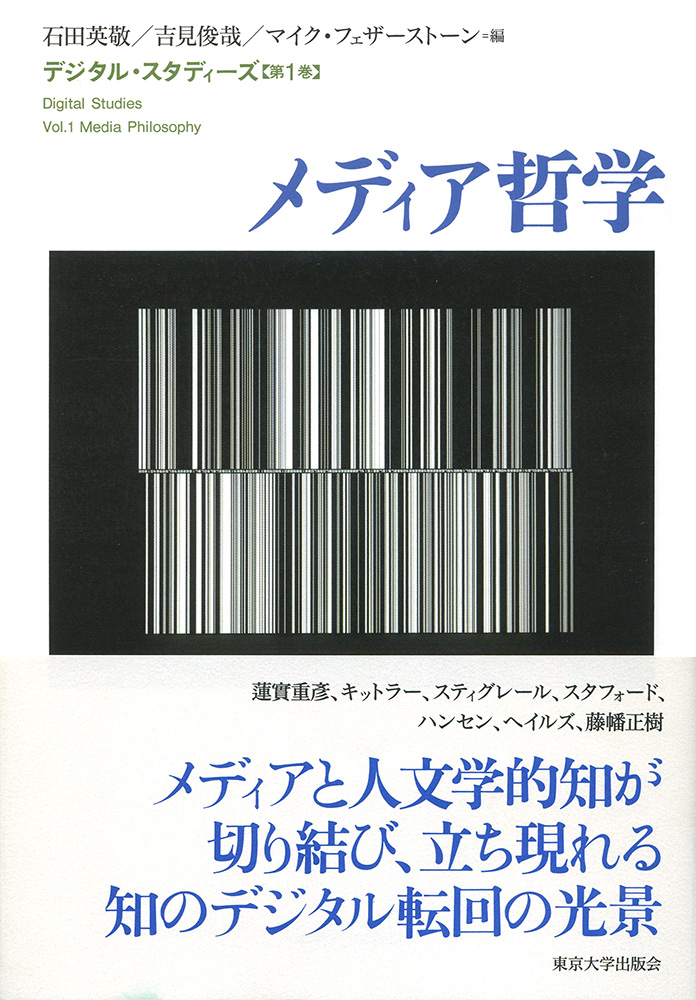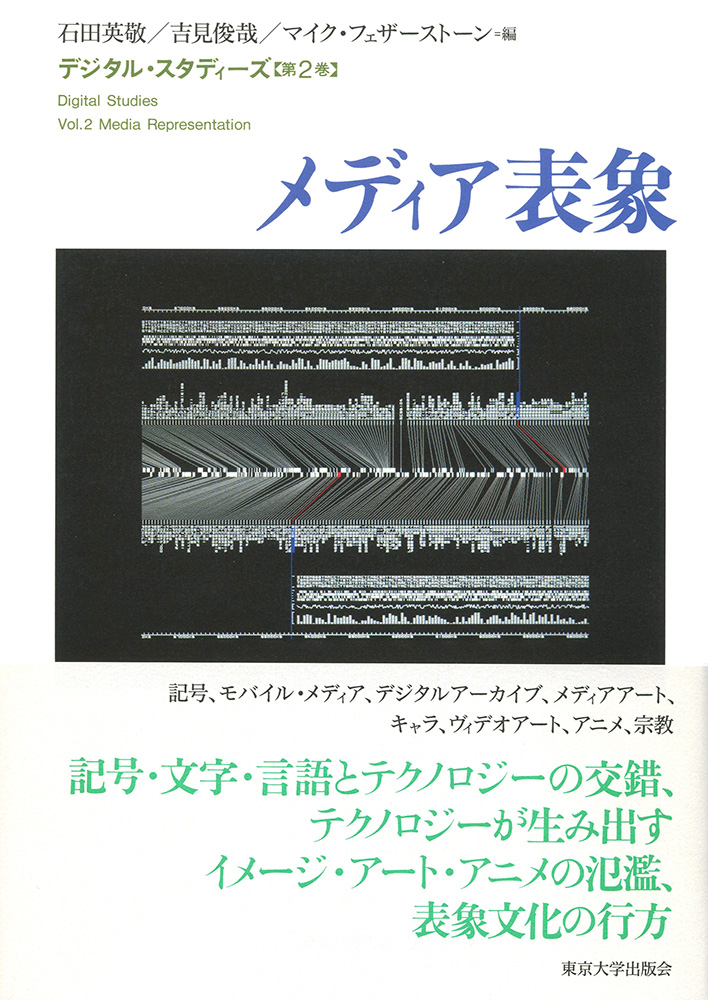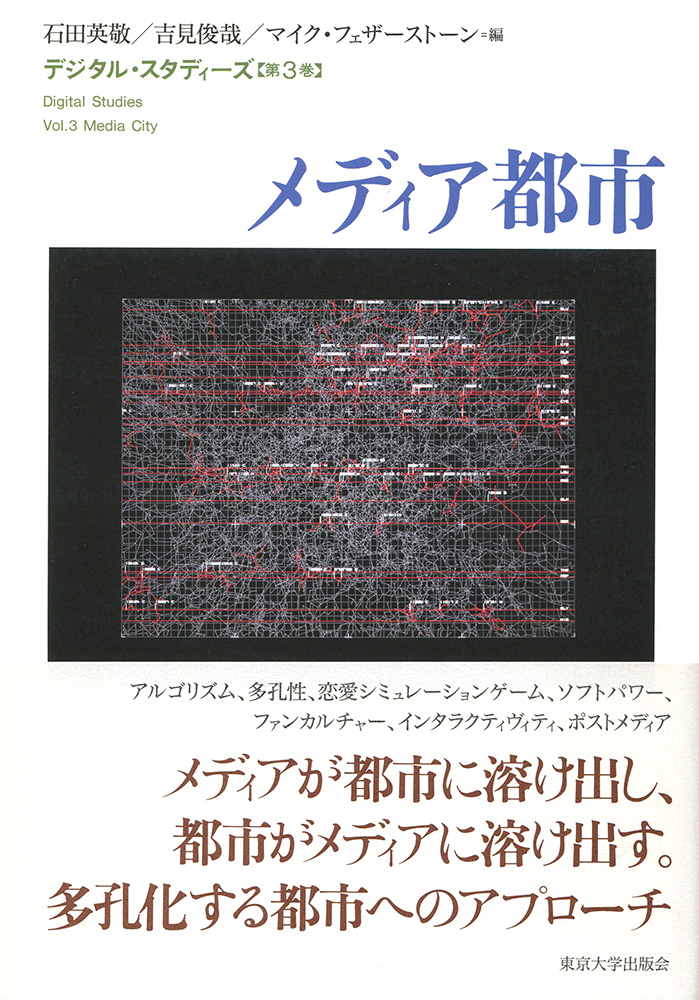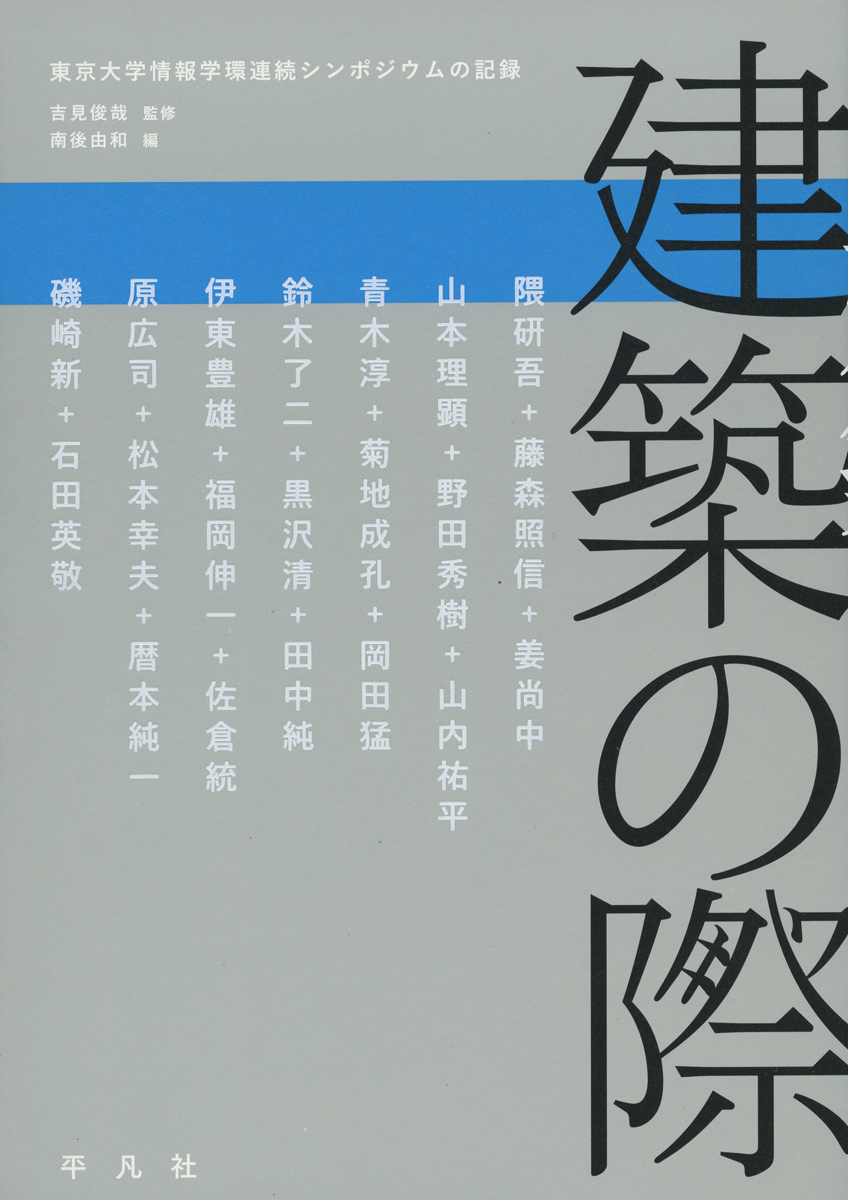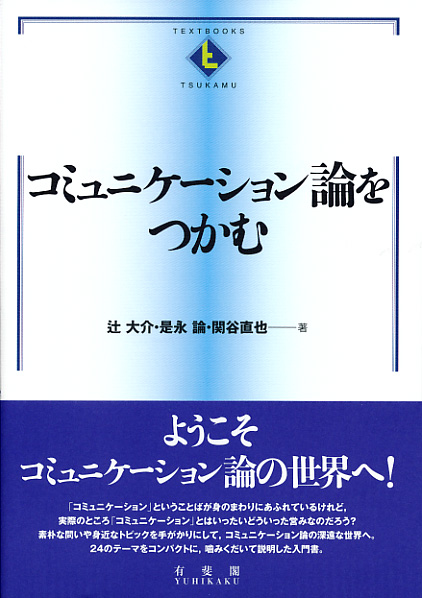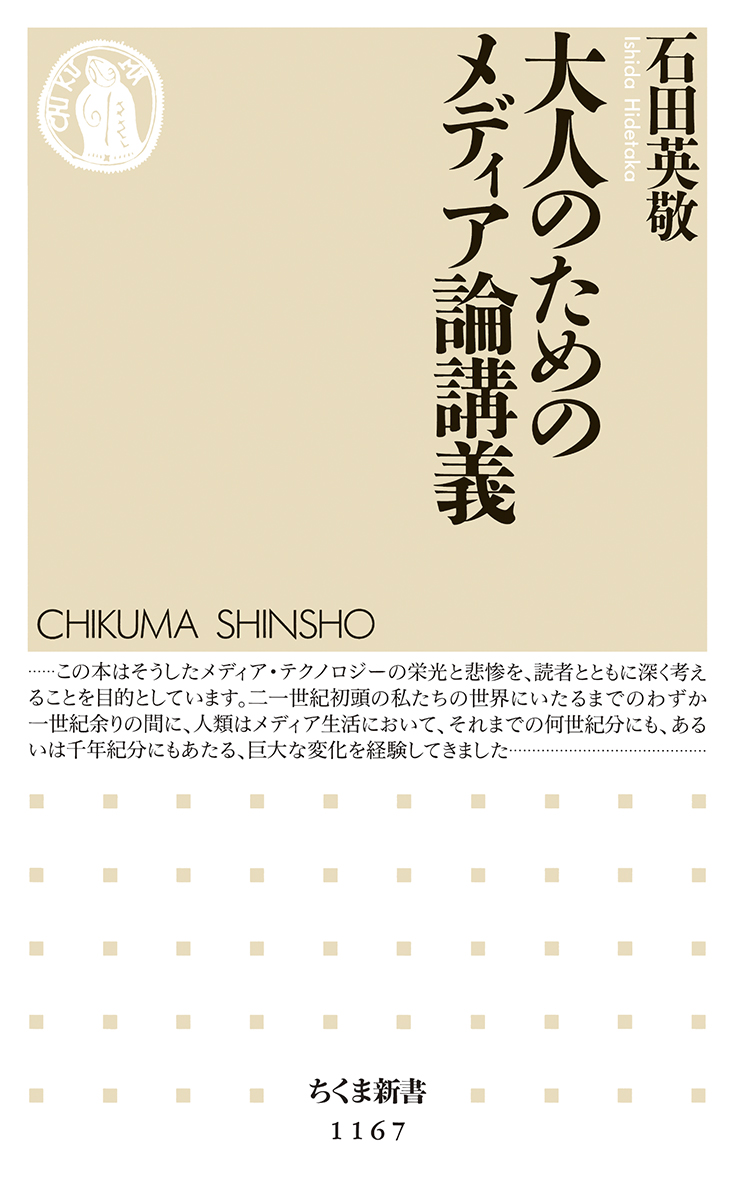
Title
Chikuma Shinsho Otona no tame no media ron kogi (Media Studies Course for Adults)
Size
256 pages, paperback pocket edition
Language
Japanese
Released
January 06, 2016
ISBN
978-4-480-06871-2
Published by
Chikuma Shobo
Book Info
See Book Availability at Library
Japanese Page
This book begins by discussing the origins of media in civilization by revisiting the Cro-Magnon cave paintings that are at least 30,000 years old and clarifying that prehistoric people were already “watching moving images.”
Based on Plato’s Phaedrus Dialogues and Freud’s Notiz über den Wunderblock, Chapter 1 offers a rough sketch of the technological evolution of media through which perception and memory, which are faculties of the human mind, have become technologically externalized in the form of “psychic apparatus,” as illustrated in smartphones and iPad media terminals.
In the book, I address the question of media in terms of the grammatology of “technological writing.” Such media issues began to arise in the 20th century when human civilization transitioned from the age of “writing” — the Gutenberg galaxy, in which people wrote letters and drew pictures — to a Post-Gutenberg era where media technologies such as photographs, phonographs, cinematographs, telephone, and television, began to do so. Human eyes cannot perceive each of the tens of still images that projection machines such as cinemas or TVs display each second, but the act of not seeing them makes them appear as moving images to human consciousness. Humans cannot read “the technological writing” that machines write, but it is due to this very mechanism that media technology has begun to produce human consciousness. This is what I call the problem of “technological unconsciousness” in modern civilization. This book questions the logic of the conscious lives of modern people based on this technological unconsciousness of media.
I call signs the elements of technological writing that produce human consciousness and generate meaning for the life world. We can explain the 20th-century rise of the academic field of semiotics and semiology, which is my area of expertise, as a result of the epistemological change accompanying the arrival of the media society.
Media development has given rise to a cultural industry that produces mass consciousness. In the 20th century, the technology of Hollywood films, television, advertising, and marketing have increasingly created this mass consciousness, leading to the arrival of an age of cultural capitalism that manufactures consumption by creating popular desires.
The history of the media in the 20th century is broadly divided into an analog revolution in the first half and a digital revolution in the second half.
The digital revolution that progressed through the second half of the 20th century was a technological innovation in which media became entirely digitized, which is the present case. This digital revolution has brought us an “information industry society.” Our modern daily lives are surrounded by the information industry and technology, which manage the entirety of information, consciousness, and meaning in them. The “ecology of mind” problem has arisen in our lives due to the “attention economy” that competes for people’s consciousness and time. To resolve this problem, I propose a “media reflexive society,” wherein society examines (reflects on) the media environment.
To truly understand the modern information-oriented civilization, it is necessary to transcend the 20th-century modern semiology and semiotics of de Saussure and Peirce and recreate a new semiotic science that reintegrates the Baroque moment of Locke and Leibnitz’s semiotic science that conceived the philosophical blueprint for modern computers. Therefore, I have written this book to introduce the “new science of signs” that I envision.
(Written by Hidetaka Ishida, Professor, Graduate School of Arts and Sciences / 2018)



 Find a book
Find a book


